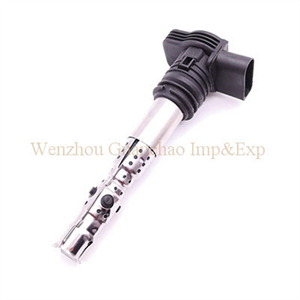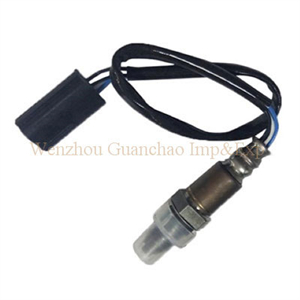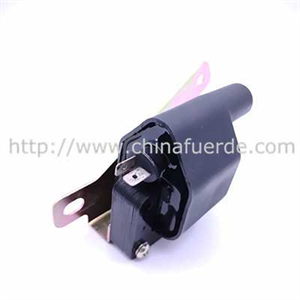The role of the oxygen sensor
Datetime: 27/06/2019 03:00 Visit: 2191
In order to obtain a high exhaust gas purification rate and reduce the carbon monoxide, hydrocarbon and oxynitride components in the exhaust gas, the EFI vehicle must utilize a three-way catalyst. However, in order to effectively use the three-way catalyst, the air-fuel ratio must be accurately controlled so that it always approaches the stoichiometric air-fuel ratio. The catalyst is typically mounted between the exhaust manifold and the muffler. The oxygen sensor has a characteristic that its output voltage is abrupt near the theoretical air-fuel ratio (14.7:1). This property is used to detect the concentration of oxygen in the exhaust and feed it back to the computer to control the air/fuel ratio. When the actual air-fuel ratio becomes higher, the concentration of oxygen in the exhaust gas increases and the oxygen sensor notifies the ECU of the state in which the mixed gas is lean (small electromotive force: 0 volt). When the air-fuel ratio is lower than the stoichiometric air-fuel ratio, the oxygen concentration in the exhaust gas is lowered, and the state of the oxygen sensor (large electromotive force: 1 volt) is notified to the computer.
The ECU determines the low or high air-fuel ratio based on the difference in electromotive force from the oxygen sensor, and controls the duration of the fuel injection accordingly. However, if the oxygen transmitter is faulty and the output electromotive force is abnormal, the computer cannot accurately control the air-fuel ratio. Therefore, the oxygen sensor can also compensate for the air-fuel ratio error caused by the wear of other parts of the mechanical and EFI system. It can be said that it is the only "smart" sensor in the EFI system.
The function of the sensor is to determine whether the oxygen in the exhaust gas after combustion of the engine is excessive, that is, the oxygen content, and convert the oxygen content into a voltage signal and transmit it to the engine computer, so that the engine can realize closed-loop control with the target of excess air factor; The three-way catalytic converter has the maximum conversion efficiency for the three pollutants of hydrocarbons, carbon monoxide and nitrogen oxides in the exhaust gas, and maximizes the conversion and purification of pollutants discharged.
Related Message
-
Car engine parts manufacturer tells you about the structure of automobile engine
2022-12-06 -
Difference between spark coils and ignition plugs
2022-11-28 - 2022-11-26
- 2022-11-17
- 2022-11-10




